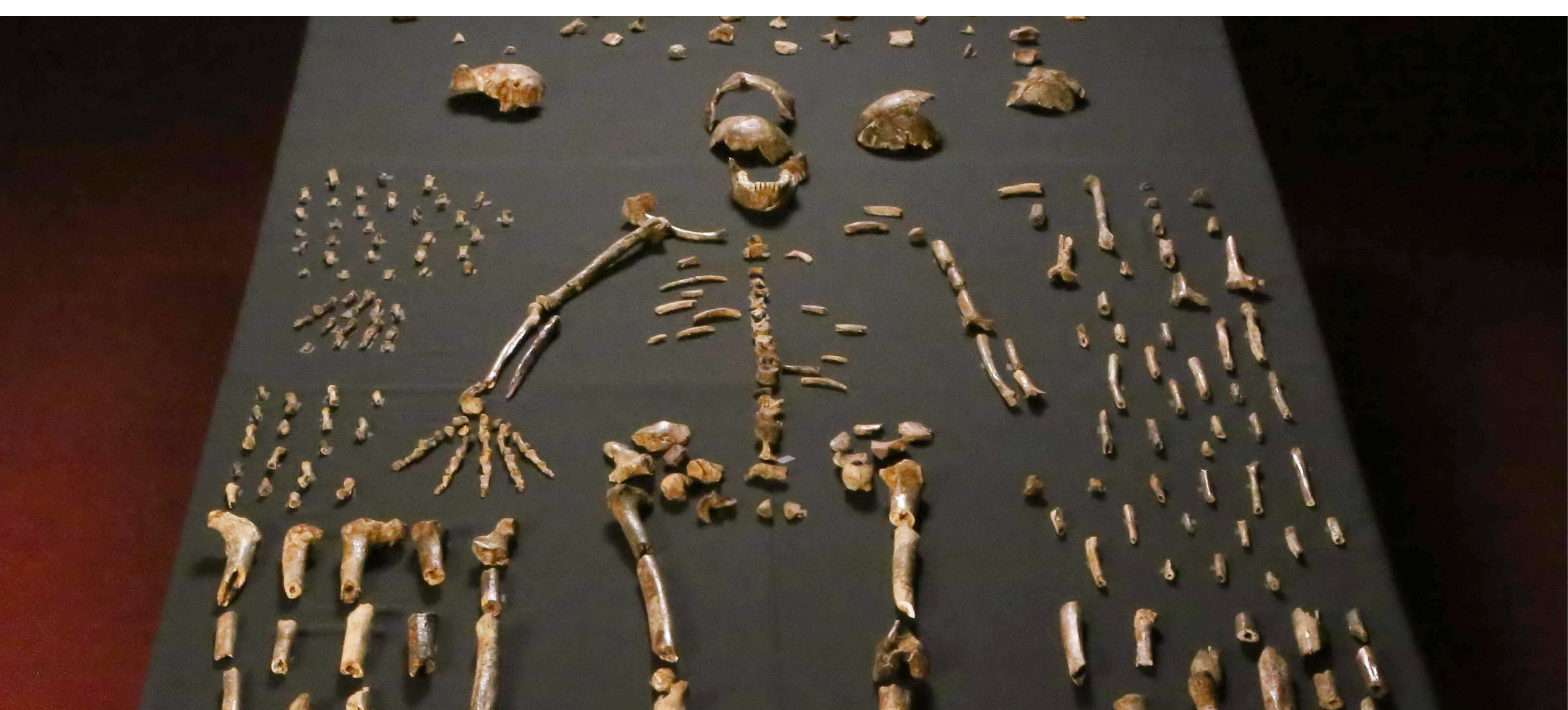Two ancient human ancestors have achieved the unlikely achievement of becoming “post-mortem astronauts” after parts of their fossilized skeletons were blasted into space late last week.
Fossilized remains of a 2-million-year-old hominin species called Australopithecus sediba and a 250,000-year-old species named Homo naledi were launched on Virgin Galactic’s spaceship, VSS Unity, on September 8, 2023.
The unusual cargo was made up of a collar bone belonging to the Australopithecus and a thumb bone of Homo naledi, which were stored in a small carbon fiber container. They were lifted to an altitude of around 13.7 – 15 kilometers (45,000 – 50,000 feet) by the VMS Eve mothership, which then separated from the VSS Unity spaceship. From here, the VSS Unity used its rocket engine to climb to suborbital space.
The remains were taken onboard by (living) astronaut Tim Nash, a South Africa-born entrepreneur and conservationist who’s been involved with human origins research in Africa. He received the remains from Professor Lee Berger, known for discovering Australopithecus sediba and his work at the Rising Star Cave on Homo naledi.
“The journey of these fossils into space represents humankind’s appreciation of the contribution of all of humanity’s ancestors and our ancient relatives. Without their invention of technologies such as fire and tools, and their contribution to the evolution of the contemporary human mind, such extraordinary endeavors as spaceflight would not have happened,” Professor Lee Berger, Director of the Centre for the Exploration of the Deep Human Journey at the University of the Witwatersrand in South Africa, said in a statement.

Homo naledi skeletal remains, made up of a composite of elements that represent multiple individuals.
These two extinct hominin species are important characters in the human family tree, which we know surprisingly little about.
The remains of Australopithecus sediba were discovered in the Malapa Cave of South Africa’s Cradle of Humankind and date to around 1.98 million years ago. This species is important as it marks a clear step away from the “ape-like” features of older relatives and towards the features that defined the Homo genus. Embodying this point, palaeontologists believe this species was capable of walking on feet, but it also spent significant time climbing trees.
Homo naledi are the stars of the Netflix documentary Unknown: Cave of Bones. They also lived in southern Africa, but much later at a point around 300,000 years ago. One of the most remarkable features of this species is that there’s evidence to suggest they buried their dead deep within the Rising Star Cave system. If true, it would indicate that this small-brained species had developed a complex culture and deep emotional intelligence.
As clearly sensitive beings, perhaps they looked up at the stars some nights, wondering what might be out there.
“These fossils represent individuals who lived and died hundreds of thousands of years ago, yet were individuals who likely gazed up at the stars in wonder, much as we do,” added Matthew Berger, the son of Professor Lee Berger who helped to make the discovery of Australopithecus sediba when he was just a child.
“I imagine they never could have dreamed while alive of taking such an incredible journey as ambassadors of all of humankind’s ancestors.”
Source Link: Extinct Human Relatives Make An Unexpected Voyage To Space